If you’re looking to refresh the ambiance of your home or office, replacing a tired or outdated drop ceiling can make a significant difference. Whether you seek enhanced aesthetics or improved functionality, understanding the costs involved is crucial for the effective budgeting and planning a successful renovation project.
In this article, we’ll embark on a journey to explore the financial considerations of replacing a drop ceiling, unraveling the unique factors that influence the overall cost.
How Much Does It Cost to Replace A Drop Ceiling?
Determining the cost of replacing a drop ceiling can be simplified by considering the per-square-foot rate. Typically, you can make a rough estimate of your final bill by calculating between $9 and $13 per square foot, which includes both the installation and materials.
It’s worth noting that the total expenses for drop ceiling installation can vary significantly, spanning from $5 to $28 per square foot. This wide range is mainly influenced by the type and cost of the drop ceiling tiles you opt for, highlighting the importance of carefully selecting the right materials to suit your budget.
What is a Drop Ceiling?
A drop ceiling, also known as a suspended ceiling or a false ceiling, is a secondary ceiling installed beneath the original or structural ceiling of a building.
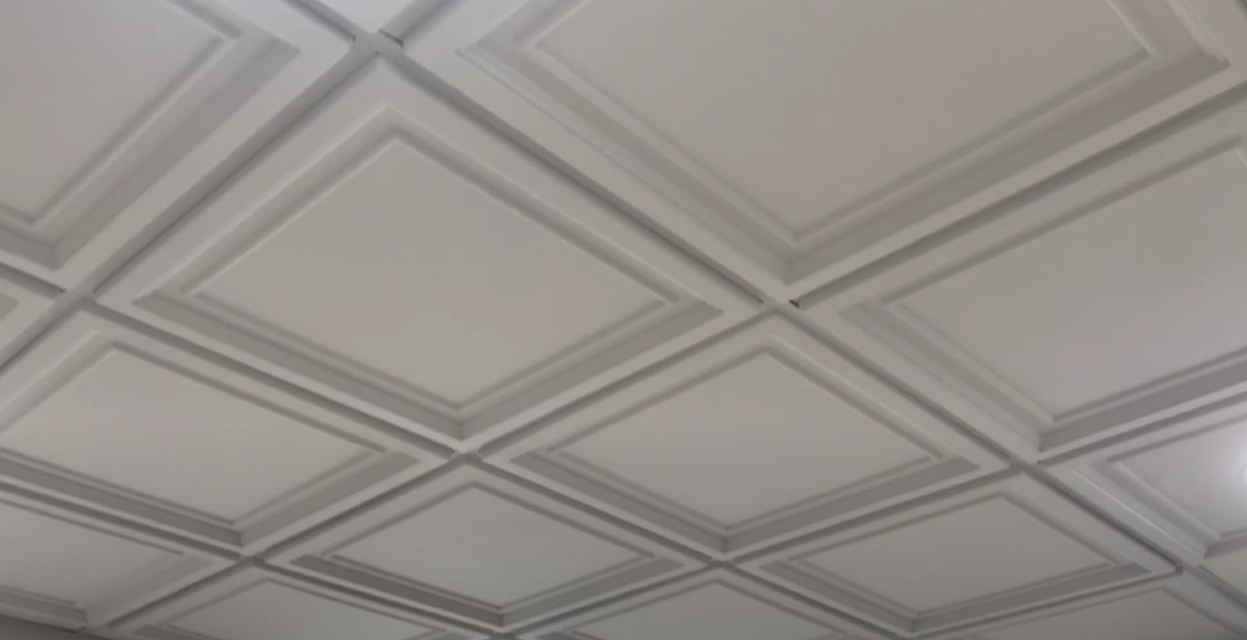
It consists of a grid framework made of metal or plastic that is suspended from the main ceiling using wires. Within this grid, individual ceiling tiles or panels are placed, creating a lower ceiling surface.
What Are the Benefits of Using a Drop Ceiling?
When it comes to interior design and functionality, drop ceilings, also known as suspended or false ceilings, offer numerous advantages. By installing a secondary ceiling beneath the main structural ceiling, a grid framework is created to hold individual ceiling tiles or panels.
Below are the benefits of using a drop ceiling, ranging from improved acoustics and easy access to overhead systems to enhanced aesthetics and energy efficiency.
Enhanced Acoustics
One significant benefit of drop ceilings is their ability to improve acoustics in a space. The space between the original ceiling and the drop ceiling acts as a buffer, helping to absorb and dampen sound waves. This can greatly reduce noise levels within a room and prevent sound from traveling to adjacent areas.
Drop ceilings are particularly useful in environments where noise control is essential, such as offices, classrooms, conference rooms, and theaters.
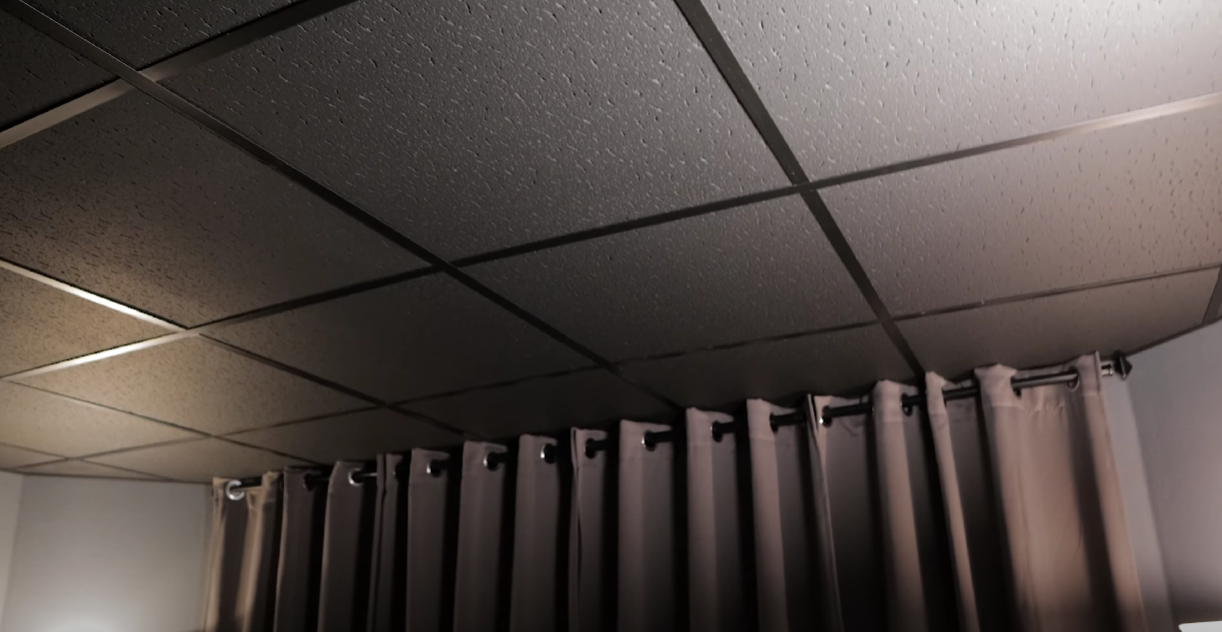
Concealed Services
Another advantage of drop ceilings is their ability to hide unsightly electrical wiring, plumbing pipes, and HVAC ductwork. The grid framework of the drop ceiling provides a convenient space to conceal these systems, creating a clean and organized look.
This not only improves the visual appeal of a room but also allows for easy access to these systems for maintenance or repairs. With a drop ceiling in place, you can avoid the need to construct bulkheads or chases to hide these services, saving time and costs during construction or renovation projects.
Easy Access to Overhead Systems
Drop ceilings offer excellent accessibility to the overhead systems in a building. In case of repairs, inspections, or modifications, the individual ceiling tiles or panels can be easily removed and reinstalled without causing extensive disruption.
This accessibility is particularly advantageous in commercial buildings or facilities where regular maintenance and updates are necessary. Whether it’s accessing wiring, plumbing, air conditioning, or fire suppression systems, a drop ceiling simplifies the process, saving time and labor.
Aesthetic Appeal
Beyond their functional benefits, drop ceilings can significantly enhance the visual appeal of a space. With a wide range of design options available, including different tile materials, textures, colors, and patterns, drop ceilings offer versatility in creating unique and appealing interior designs.
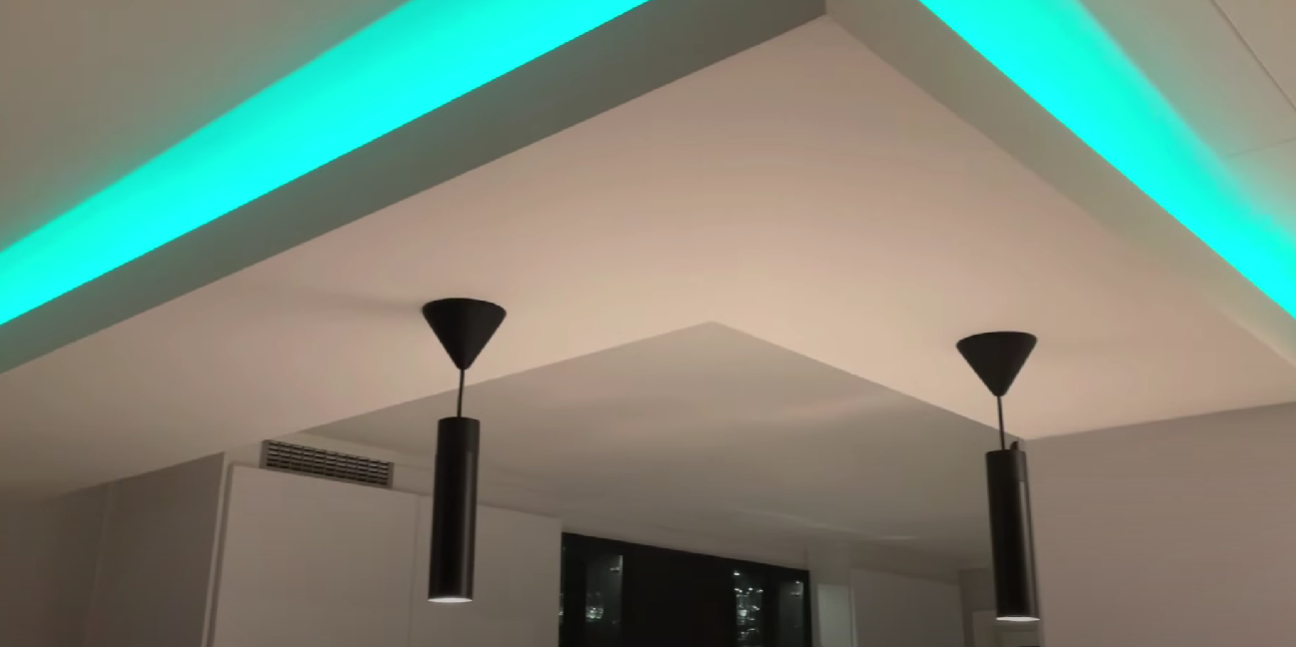
Whether you prefer a sleek and modern look or a more traditional aesthetic, there are drop ceiling options to suit every style. Additionally, drop ceilings can incorporate other decorative elements such as recessed lighting, crown molding, or decorative trims, further enhancing the overall ambiance of a room.
Energy Efficiency
Drop ceilings can contribute to improved energy efficiency in a building. By creating an additional layer of insulation, they help to reduce heat transfer between floors, leading to better temperature control and energy conservation.
This can result in lower heating and cooling costs, especially in large commercial spaces. Additionally, drop ceilings can accommodate energy-efficient lighting fixtures, such as LED panels or recessed lights, which further contribute to energy savings and sustainability.
Drop ceilings offer a multitude of benefits that make them a popular choice in various settings. Consider incorporating a drop ceiling in your next construction or renovation project to reap these advantages and create a functional and visually appealing environment.
Different Factors That Affect the Cost of Replacing Drop Ceilings
The cost to replace a drop ceiling can vary significantly depending on several factors. It’s essential to consider these factors when estimating the overall expenses involved in the replacement project. Below are the key factors that can affect the cost of replacing a drop ceiling.
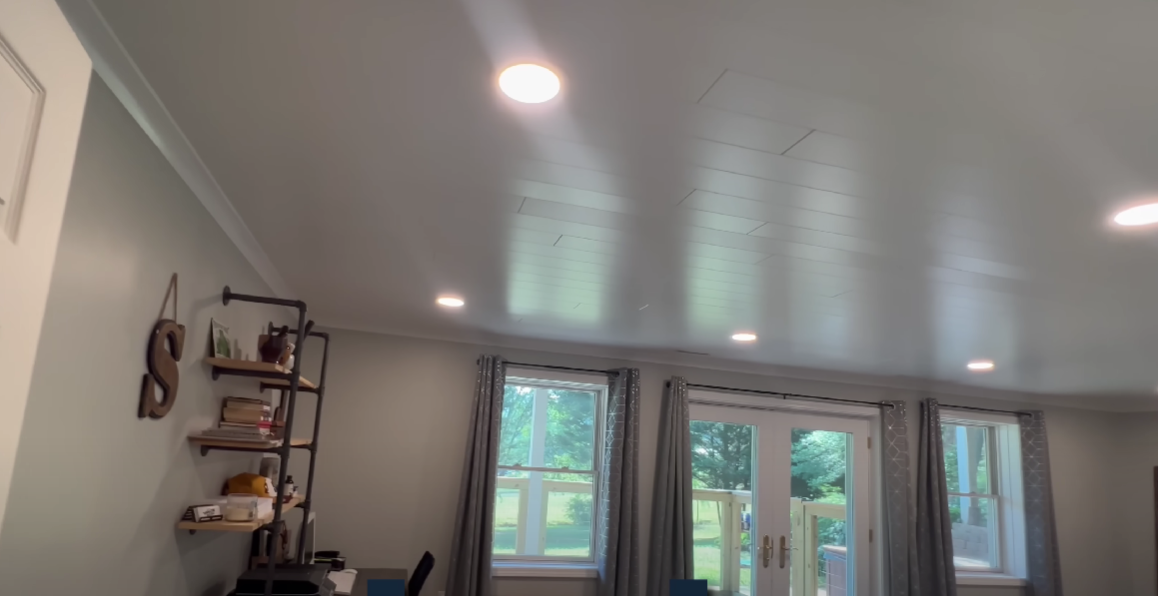
Material Quality
The quality of the materials used for the drop ceiling plays a significant role in determining the overall cost. There is a wide range of drop ceiling tile options available, ranging from basic and budget-friendly to high-end and premium materials.
The price of the tiles can vary based on factors such as the type of material (e.g., mineral fiber, PVC, metal), design, durability, and acoustic properties. Opting for higher-quality materials will generally result in a higher cost, but they may also offer better aesthetics, durability, and acoustics.
Ceiling Size
The size of the ceiling is a crucial factor in estimating the cost of a drop ceiling replacement. The larger the area to be covered, the more materials and labor will be required, leading to higher costs. Contractors often calculate the cost per square foot to provide an estimate.
However, it’s important to consider the overall square footage as well as any irregularities in the ceiling’s shape or layout that may require additional materials or customization.
Labor Requirements
Labor costs are a significant component of the overall cost to replace a drop ceiling. The complexity of the installation process, including the removal of the existing ceiling and the installation of the new grid and tiles, can influence the labor requirements and thus impact the cost.
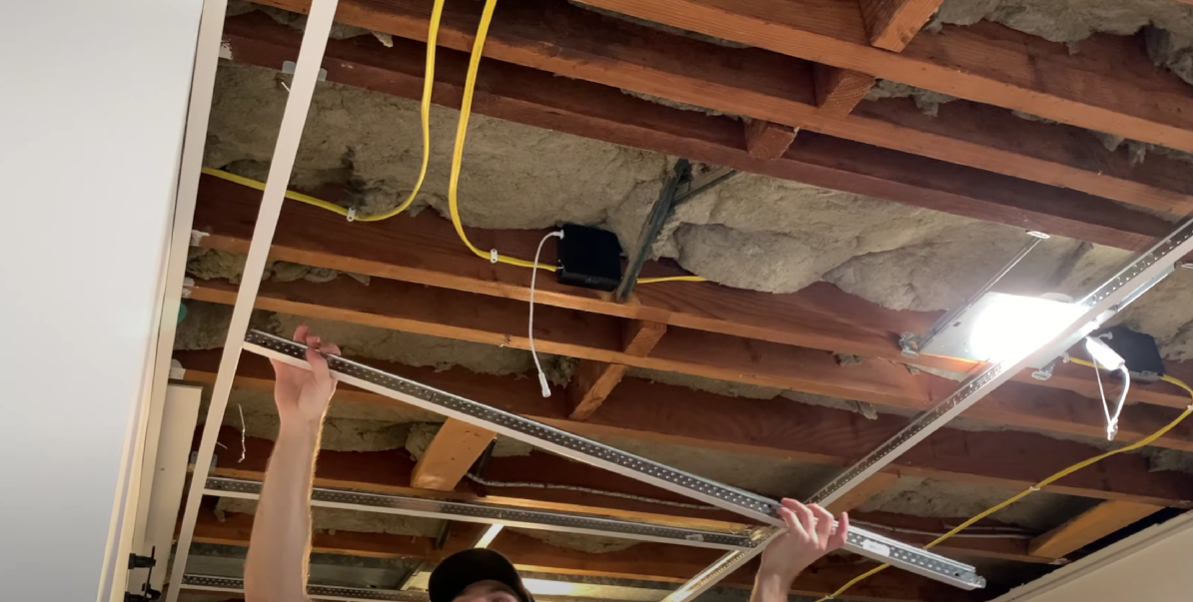
Factors such as the ceiling height, accessibility of the area, and any additional features or customization desired will affect the labor involved. In some cases, specialized skills or expertise may be required, which can also increase labor costs.
Additional Features
Additional features or customization options can contribute to the overall cost of replacing a drop ceiling. These features may include recessed lighting installation, decorative trims, crown molding, or integrating other ceiling-mounted fixtures such as speakers or ventilation grilles.
Each of these additional features will require extra materials, labor, and potentially specialized expertise, which can increase the overall cost.
Location-Specific Factors
The geographical location of the project can also impact the cost of replacing a drop ceiling. Labor rates can vary from one region to another, with some areas having higher or lower average costs.
Additionally, local building codes, permit requirements, and any specific regulations or standards may affect the project cost. It’s important to consider these location-specific factors when estimating the overall expenses.
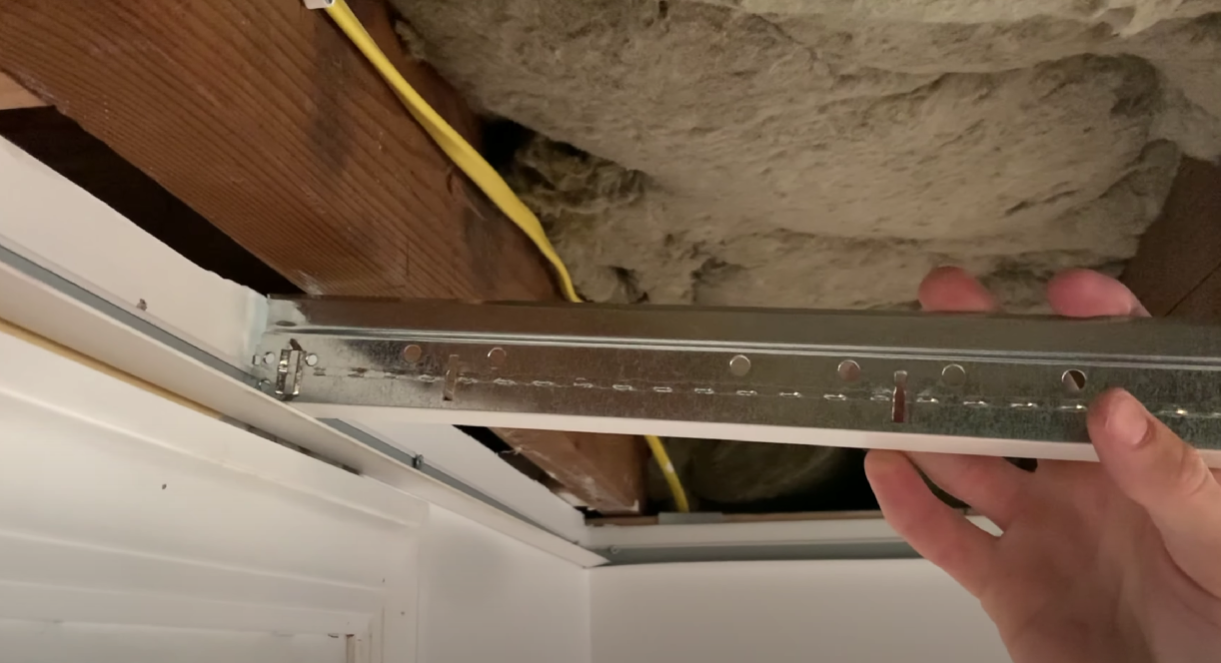
Several factors contribute to the overall cost of replacing a drop ceiling. It is advisable to consult with professionals, obtain multiple quotes, and carefully evaluate these factors to arrive at an accurate estimate for the cost of replacing a drop ceiling.
How to Save Money in Replacing a Drop Ceiling?
Replacing a drop ceiling can be a significant investment, but there are strategies you can employ to save money without compromising on quality.
By considering various cost-saving techniques and making smart choices during the planning and execution phases, you can effectively manage your budget. Below are the different ways to save money when replacing a drop ceiling.
Choose Affordable Materials
One of the most effective ways to save money when replacing a drop ceiling is by selecting affordable materials. While high-end options may offer superior aesthetics or advanced features, they often come with a higher price tag. Consider more budget-friendly alternatives without compromising on quality.
Look for cost-effective drop ceiling tiles made of materials like mineral fiber or PVC, which offer good durability and acoustic properties at a lower cost compared to premium options.

DIY Versus Professional Installation
Another avenue for saving money is to assess whether you can undertake the installation yourself (DIY) or if it’s necessary to hire professionals. DIY installation can significantly reduce labor costs, especially if you have prior experience or are willing to learn and follow installation guidelines.
However, it’s crucial to have the necessary skills, tools, and time to complete the project successfully. For more complex installations or if you lack experience, hiring professionals ensures a high-quality outcome while saving potential costs associated with mistakes or rework.
Plan Strategically
Strategic planning is essential for cost savings when replacing a drop ceiling. Start by thoroughly evaluating the scope of the project and creating a detailed plan. Accurately measure the ceiling area to determine the exact quantity of materials required, minimizing wastage and unnecessary expenses.
Consider any additional features or customization needs in advance to avoid last-minute modifications that could increase costs. By planning and having a clear understanding of the project’s requirements, you can avoid unexpected expenses and optimize your budget.
Reuse Existing Components
In some cases, you may be able to reuse certain components of the existing drop ceiling, such as the suspension system or grid framework. If these elements are in good condition and compatible with the new ceiling tiles, reusing them can help save money.
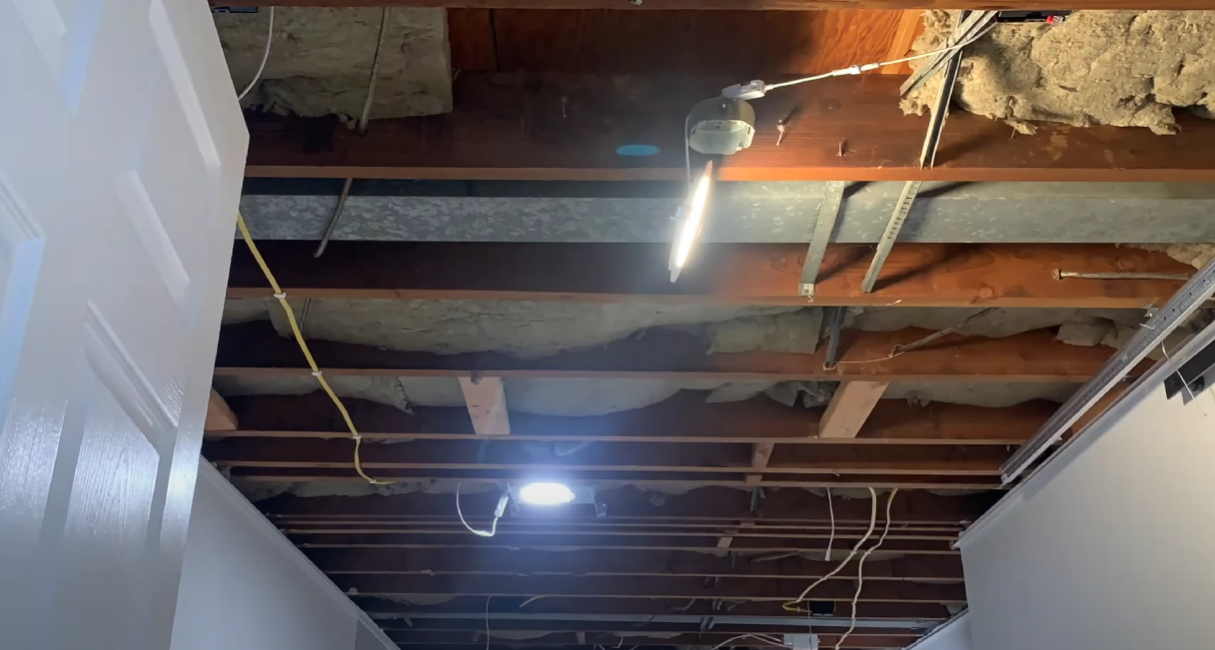
However, it’s crucial to assess their condition and ensure they meet the necessary standards for a successful replacement. Consult with professionals to determine if reusing any existing components is a viable and cost-effective option.
Compare Quotes and Negotiate
When hiring professionals for the installation, it’s advisable to obtain multiple quotes from different contractors. Comparing quotes allows you to identify the most competitive prices and evaluate the services offered. Additionally, don’t hesitate to negotiate with contractors to potentially secure a better deal.
Engage in open communication, discuss your budget constraints, and explore possibilities for cost savings. However, be mindful not to compromise on the quality of materials or the expertise of the professionals solely for the sake of cost reduction [1].
Consider Value Engineering
Value engineering is a process that involves finding alternative solutions or materials that offer the same functionality at a lower cost. Collaborate with professionals or experts in the field to explore value engineering options for your drop ceiling replacement.
They can recommend alternative materials, design modifications, or installation techniques that reduce expenses without compromising on quality. This approach ensures you make informed decisions while maximizing cost savings.

Replacing a drop ceiling doesn’t have to be an overly expensive endeavor. Remember to strike a balance between cost savings and achieving your desired aesthetic and functional outcomes. With careful planning and informed decision-making, you can successfully replace your drop ceiling while keeping costs under control.
Conclusion
The cost to replace a drop ceiling can vary based on several factors such as material quality, ceiling size, labor requirements, and additional features. While the average range falls between $9 and $13 per square foot, the total expenses can range from $5 to $28 per square foot.
It’s crucial to consider these factors and obtain accurate estimates to plan and budget effectively for a drop ceiling replacement project.

